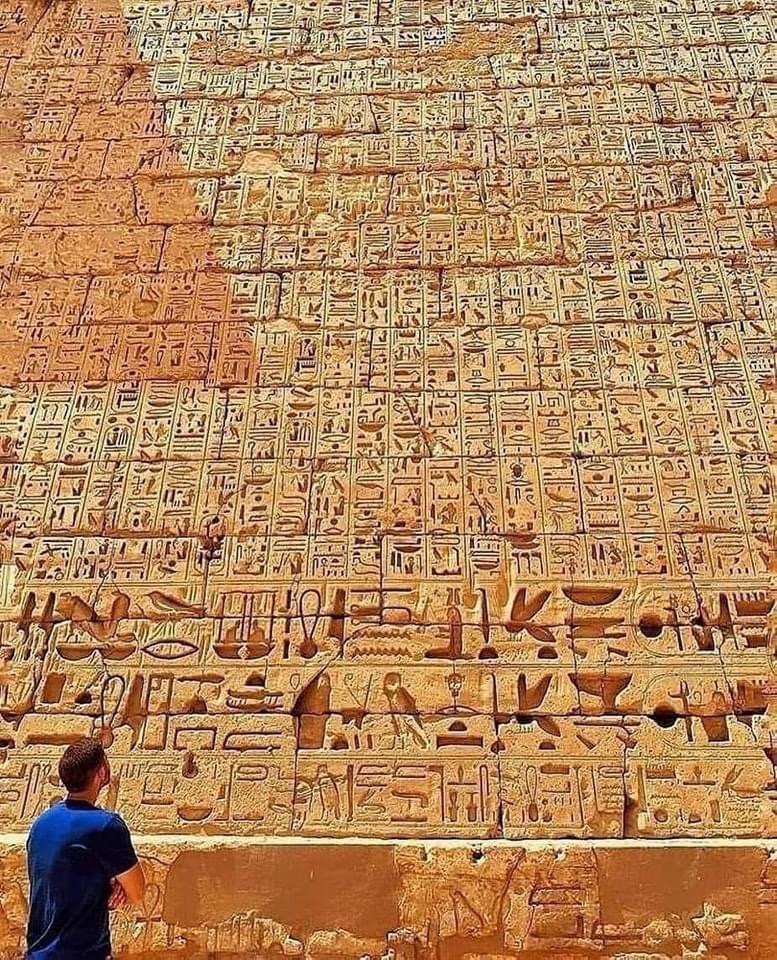On the west bank of Luxor, in the shadow of the Valley of the Kings, stands the magnificent mortuary temple of Ramses III at Medinet Habu. Constructed between 1186 and 1156 BC, this architectural marvel commemorates the reign of one of Egypt’s most formidable pharaohs. Beyond its grandeur, the temple holds an extraordinary treasure: intricate hieroglyphic inscriptions that chronicle not only the military triumphs and divine authority of Ramses III but also the cultural vibrancy of ancient Egypt. These carvings, meticulously etched onto the temple’s walls, are far more than decorative art. They are historical narratives, offering a glimpse into the life and legacy of a ruler who helped define an era.
The hieroglyphic inscriptions at Medinet Habu serve as a vital key to understanding the reign of Ramses III. Among the most significant stories depicted is the battle against the Sea Peoples, a coalition of foreign invaders who posed a grave threat to Egypt during the 12th century BC. The reliefs and accompanying texts vividly recount the pharaoh’s heroic defense of Egypt, portraying him as a divine protector chosen by the gods to uphold Ma’at—the concept of cosmic balance and order—against the encroaching forces of chaos. These depictions not only highlight Ramses III’s military prowess but also reinforce his role as a ruler blessed with divine favor.

The inscriptions celebrate the pharaoh as both a skilled warrior and a devoted servant of the gods. Scenes of Ramses III slaying his enemies in battle are interspersed with depictions of him making ceremonial offerings to the gods, emphasizing the deep intertwining of military success and religious devotion. These carvings are more than mere records of historical events; they underline the divine mandate Ramses III believed legitimized his reign. By presenting himself as a mortal king with divine authority, Ramses III reinforced the notion that he was not only the ruler of Egypt but also its spiritual protector.
The grandeur of Medinet Habu extends beyond its inscriptions. Architecturally, the temple is a breathtaking example of New Kingdom design. It features towering pylons, expansive courtyards, and intricately decorated sanctuaries. Every inch of its massive walls is covered in reliefs and hieroglyphs that recount the pharaoh’s victories, religious duties, and the myths of the gods worshipped in ancient Egypt. These carvings exemplify the craftsmanship of ancient Egyptian artisans, who blended precision and artistry to create works that remain awe-inspiring millennia later.
The hieroglyphs themselves are masterpieces of art. Painstakingly carved, they reflect the extraordinary skill and attention to detail of the artisans who created them. Many of these inscriptions retain traces of their original paint, providing a rare glimpse into the vibrant colors that once adorned the temple. Each glyph, whether depicting Ramses III, a deity, or sacred symbols, contributes to the temple’s overarching narrative. These detailed carvings capture not only significant historical events but also the spiritual essence of ancient Egypt, showcasing the intricate relationship between art, religion, and politics in this ancient civilization.
Medinet Habu’s significance extends beyond its role as a historical record of Ramses III’s reign. As a mortuary temple, it was a place of worship dedicated to the Theban Triad—Amun, Mut, and Khonsu. It was also designed to honor the pharaoh’s ka, or spirit, ensuring his protection and sustenance in the afterlife. Within this sacred space, the hieroglyphs served to elevate Ramses III to a divine status, portraying him as the earthly representative of the gods. This dual role of pharaoh—as both a mortal leader and a living god—was a cornerstone of ancient Egyptian belief.
In addition to their religious purpose, the inscriptions at Medinet Habu functioned as powerful political propaganda. They legitimized Ramses III’s authority by celebrating his military victories and his defense of Egypt against external threats. By intertwining religious reverence with political messaging, these inscriptions conveyed a seamless narrative of divine favor and royal power. The temple itself became a monumental testament to Ramses III’s reign, projecting strength, piety, and legitimacy to all who entered its gates.
Today, Medinet Habu remains one of the best-preserved monuments of ancient Egypt, offering invaluable insights into the political, military, and religious history of the New Kingdom. The hieroglyphic inscriptions on its walls immortalize the achievements of Ramses III, providing a vivid glimpse into the life of a ruler who not only shaped Egypt’s destiny but also left a profound mark on its culture and religion. These inscriptions are more than just ancient texts; they serve as a bridge between the past and the present, connecting modern viewers with the grandeur and complexity of one of the world’s greatest civilizations.
The enduring legacy of Medinet Habu lies in its ability to captivate and inspire. For modern visitors, the temple’s hieroglyphs provide an unparalleled window into the artistry, spirituality, and political sophistication of ancient Egypt. They tell a story of a civilization that flourished over 3,000 years ago, yet their messages of leadership, faith, and resilience remain timeless. As one stands before the towering pylons and intricately carved walls, it is impossible not to be awed by the vision and ambition of Ramses III, a pharaoh who sought not only to rule but to immortalize his reign in stone.
Through its inscriptions, Medinet Habu continues to speak to us across the millennia. It reminds us of the enduring power of art and narrative, of the ways in which history is preserved and remembered. Above all, it stands as a testament to the legacy of a ruler who strove to etch his name into eternity, ensuring that his deeds—and the civilization he governed—would never be forgotten.





